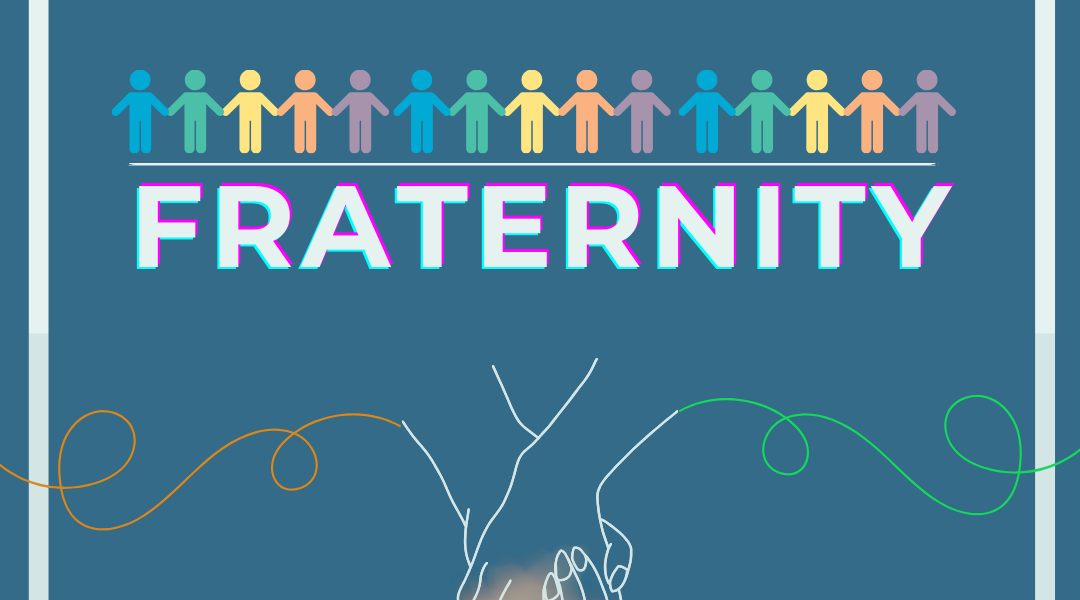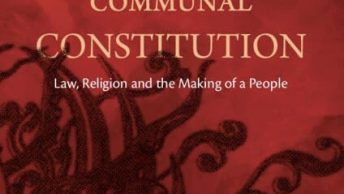Summary: In this piece, we continue the discussion on Dr. Farrah Ahmed’s Chapter on Fraternity forthcoming in the Cambridge Companion to the Constitution of India. The article can be accessed here, a summary of the article can be accessed here and a response piece by Rowena Robinson can be accessed here. In this piece, Elisa Arcioni provides her comments on the article by reflecting on her own work on constitutional identity.
Introduction
In this response to Professor Ahmed’s chapter, I take up the concept of fraternity as is explained within the Indian constitutional context and provide some reflections on how it intersects with legal and theoretical issues regarding the identity of a constitutional people. Key to my response is how fraternity opens up questions relating to the combined communal and individual nature of ‘the people’ and how, in that light, ambivalence arises due to the tensions inherent within the way in which fraternity connects to affective bonds, differences, and virtues.
My commentary operates at a level that does not incorporate any expertise in Indian law or constitutional law. I take as given that what Professor Ahmed outlines is correct in the Indian constitutional context. I seek to reflect on how Professor Ahmed’s argument intersects with my own work regarding the constitutional constructs of ‘the people’. I focus on two main points. First, how the discussion of fraternity in the Indian Constitution intersects with how membership of ‘the people’ is constructed in law. Second, how the nature of fraternity in the Indian Constitution brings to light the inherent difficulties and tensions relating to the law having a role in determining identity.
Law and Identity – Contributions of Fraternity
The law has a role to play in relation to identity, by determining membership of a nation state. The individual is connected to, or affected by, collective identity, and the state is a social group where the contours of that group are determined by law. The ways in which law does so need to mediate between stability and certainty of the rules of membership, while also having those rules bear some relationship to the demographic realities of the community attached to the territory of the state. In order to maintain legitimacy, the state should include amongst its people the individuals that, in fact, have a relevant claim to membership through relevant attachment. The position I have outlined leaves open what a relevant claim is and what attachment means.
Fraternity is relevant to this view of the law being involved in determining membership because fraternity affects how claims and attachments are viewed and responded to as being relevant or legitimate in a particular constitutional system. As we see by Professor Ahmed’s argument, in the Indian context, individuals are understood as members of a series of groups, and when we see the operation of the value of fraternity, it becomes clear how the law takes a view regarding how those groups are dealt with.
How does fraternity affect the understanding of ‘the people’? At the most general level, fraternity implicates affective bonds through ideas of shared citizenship. That is concerned with the communal and social nature of the relevant constitutional people. Individuals are connected as part of one ‘people’ in the nation. The way in which the ‘people’ are understood through the lens of fraternity includes toleration of (some) differences amongst the people, but where not all differences are constitutionally legitimate. That is, we see the people separated into distinct communities or groups with particular characteristics. The way in which the law takes up the concept of fraternity affects how those groups are treated or recognized – whether fraternity would require toleration of the distinct characteristics of a group, or whether fraternity would be prevented from being used as a basis to treat groups differently (less beneficially) than others.
We see the contrasting accounts in Professor Ahmed’s chapter where Muslim Indians are tolerated as a distinct community (while noting the resentment that attaches to this), but where untouchability is explicitly excluded as a valid basis for difference. Yet we also see that brotherhood retains a hierarchical character and is essentially gendered. Thus, fraternity operates to determine hierarchical relationships between communities within the one national people. Fraternity, as it affects membership, includes an implicit or explicit recognition of distinct groups or communities, and then a requirement of some toleration of and generosity towards some differences, excluding some differences from consideration and making some differences essentially valid.
Inherent Tensions When Law Determines Identity – Fraternity and Ambivalence
This outline of the way in which fraternity helps to understand the identity of the Indian people under the law logically connects to the second main reflection I make regarding Professor Ahmed’s chapter. Namely, how the tensions within the concept of fraternity match the inherent challenge of having the law being involved in determining membership and the identity of ‘the people’. While I note above that the law inevitably has a role to play in determining identity, that role is neither straightforward nor without challenges.
Professor Ahmed clearly outlines the ‘concerning implications’ of fraternity being used as a constitutional value, including its gendered nature, its concerning impact on liberty, and the way in which fraternity has been used to facilitate resentment of minorities. In the closing paragraphs of the chapter, Professor Ahmed, urges caution in the development and use of fraternity while also exhorting its desirable potential.
The dual conclusions may seem contradictory but are, in fact, reflective of the ambivalent nature of the law engaged in identity questions. Law’s engagement with identity involves the inevitable twin components of inclusion and exclusion. To identify is also to indicate who is excluded and the respective status of individuals and groups within the broader ‘people’, to indicate who is beyond the scope of the relevant category and so deny the status of membership or consequences of membership.
To identify is also to indicate the basis of inclusion and exclusion, a process that is not necessarily determined by desirable outcomes – the process may be normatively ambivalent. Law’s engagement in the task of identification and membership can be emancipatory and justice-reinforcing, just as it can be discriminatory and exclusionary. As a human construct, the ways in which a definition is implemented will inevitably be imperfect and subject to considerations that, at any given time, will be viewed in multiple ways and which will be subject to critique both at the time and later. This analysis of the way in which law engages in determining identity matches the critiques of fraternity.
Closing comments – Insights Beyond India
I applaud Professor Ahmed’s work and its fascinating descriptive and analytical contribution. Fraternity, as it operates within the Indian context, highlights the challenges of people living together in a state which includes several communities that co-exist alongside and within the national people. The reality of pluralism or multiple communities within one state is common in many countries around the world. Thus, the broader insights and words of caution we see in Professor Ahmed’s work are useful beyond the Indian context.
As an Australian academic I have learnt a great deal from Professor Ahmed’s work. Not only in relation to the detail of the Indian context, but also as a model for careful consideration of constitutional values. I end where I began. The law inevitably plays a role in determining identity – I have focused on the identity of ‘the people’, but in addressing their identity one also sees components of the identity of a state and of a constitutional system. Careful analysis of the values and concepts used in the construction of identity is needed in order to understand the identity. This chapter provides an exemplar of how to grapple with complexity, maintain attention to detail, and highlight tensions so as to provide a thoughtful reflection of how the law engages in the construction of a people – giving readers from within India and beyond a foundation for charting the inevitable next steps in the iterative development of constitutional identity.
Elisa Arcioni is a Professor at the University of Sydney Law School, Australia. She is a leading scholar of constitutional identity.
[Ed Note: This Discussion was coordinated and edited by Vishnu Bandarupalli with assistance from Saranya Ravindran and published by Baibhav Mishra from the technical team of the Student Editorial Team]





3cedzl
lemc6j
d39gzi